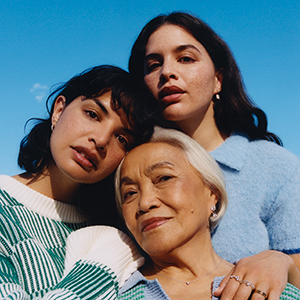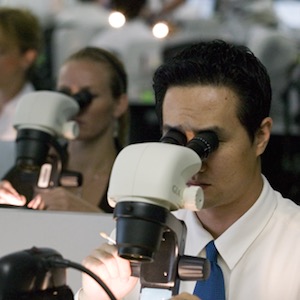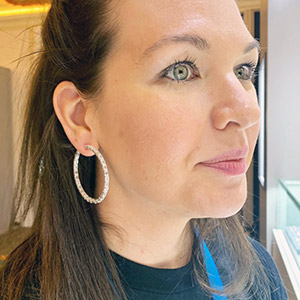
When De Beers CEO Al Cook was asked about the future of De Beers’ lab-grown diamond brand, Lightbox, at the JCK Show in June, he was noncommittal.
“We’ll see how Lightbox develops as a brand and make those decisions,” he said.
But this morning, Lightbox announced that it’s debuting a new fall campaign (“Modern Family”); a refreshed, “less clinical” visual identity; and a new slogan (“Shine Bright Spend Less.”) Which sends a clear message: Lightbox lives!
That’s in spite of De Beers turning its Oregon facility, which had been producing most of its diamonds, over to Element Six to produce industrial diamonds.
“We’re going to stop producing diamonds for jewelry when it comes to Oregon,” Lightbox CEO Antoine Borde tells JCK. “But it doesn’t mean we’re going to stop innovating and growing the brand.
“We have enough stones to build inventory and the products that we want to design and we want to launch. When you look at the value chain for lab-grown, prices are falling so much, being in production and being in the wholesale market is not where most value is carried. Building a brand and making sure we also drive the category is definitely something with much more value.”
And if Lightbox does run out of diamonds, it may buy on the open market—a change from its standard vertically integrated model.
“We’ll see,” Borde says. “For now, we haven’t decided. We have enough stones for the foreseeable future. We’ll consider different options when the time comes. Given the market situation today and the price levels at wholesale, this is not necessarily something which is a big worry for us. The brand is the priority. As of today, we have what we need.”
Lightbox also had a “private label” business that produced diamonds for other brands, including Pandora. That will be a lower priority going forward, Borde says, but it will continue forging partnerships, such as its recent collaboration with The Future Rocks.
He says that Lightbox wants to continue “to play a role within [the De Beers] portfolio, which supports the category overall, maintains this element of differentiation between natural and lab-grown, and contributes to the bifurcation of the market—which is happening anyway—and brings overall transparency.”
He notes that Lightbox will stay at its current $500-a-carat entry-level price point—though it offers frequent promotional discounts—and will introduce different cuts and colors. “Colors are a huge opportunity,” he says.
He adds that Lightbox will turn six years old tomorrow, Sept. 27, and feels the market is finally catching up to it.
“[Fashion jewelry] was the vision we had initially,” he says. “And it’s happening. When I read Signet saying LGD fashion is growing double-digit, when I see Swarovski and Pandora growing more and more collections around fashion using lab-grown, that is exactly what we are doing.
“When everyone was focused on bridal, we were the only ones trying to reach out and show consumers the opportunities that they had, and giving consumers the ability to buy a lab-grown diamond in an innovative way,” he continues. “I can definitely see a tipping point where you see the fashion category developing faster than other areas of the category…. And that’s going to help the overall diamond market, including natural and lab-grown.”
He notes that there’s still a lot of opportunities in branded lab-grown fashion.
“There is not a lot of offerings [in fashion]. You have Swarovski, you have Pandora—they are not pure players when it comes to lab-grown diamonds. There is a big opportunity to create and develop a brand.”
He says that De Beers believes the market will continue to bifurcate.
“Today, you have consumers entering the market through lab-grown diamonds, because the price is super-accessible, because the designs are cool. But it’s not something like a natural diamond, which has more emotions attached to it.
“But that doesn’t mean that people will buy either/or. There are so many industries where people mix and match between luxury and accessible. You can buy a Chanel dress, or something at H&M, and wear both at different times. You may get mascara at Maybelline, which is 10 bucks, for everyday wear, but when you go out and want to feel more self-confident, you might buy Lancôme or something more expensive. So there is room for both categories.”
Photo courtesy of Lightbox
- Subscribe to the JCK News Daily
- Subscribe to the JCK Special Report
- Follow JCK on Instagram: @jckmagazine
- Follow JCK on X: @jckmagazine
- Follow JCK on Facebook: @jckmagazine






